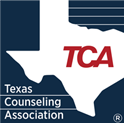Family Caregiver Counseling
According to a recent study, 4 in 10 adults in the U.S. are caregivers to an aging or disabled relative—4 in 10. That number is expected to rise as Boomers age. For some families, the responsibilities for caregiving an individual loved one is distributed among several members. For most families, the day-to-day caregiving responsibilities are borne by a single individual, often a spouse or child. Whatever may be the cause and course of the care recipient’s frailty (age, disability or disease), one thing is constant, to become a caregiver changes every relationship of the caregiver and everything that comes after.
The very structure of family relationships change to accommodate the frail loved one. Caregiving is a role that “adds onto” existing roles. The caregiver must still be a parent to her children, wife to her husband (or verso), child to her invalid parent, employee to her employer. Some experts see this added role as “on top of” these other roles. I view it as replacing a very important role to the care of oneself. I frequently advise a client to carve out some time for self-care. One of the more common reactions is: “I don’t have time for myself!” In other words, “caring for others is more important than caring for me.”
Adding to the complexity of the situation, caregiving distorts family dynamics—how family members relate to one another. Families are far more mobile than in previous generations. Mom, who needs care, may live in Ardmore, OK. Four grown daughters are scattered around the U.S., only one living near Mom. It is usually that daughter, who assumes disproportionately the role of primary caregiver. It is common for the more remote relatives to raise objections to whatever caregiving plan is in place, leaving the primary caregiver feeling isolated and lonely.
Time spent providing care to a frail loved one can range from a 2-3 hours a month (early stage) to more than 40 hours a week as the care recipient loses more and more functional abilities. A survey of spouses of men with dementia reported that most of these women were able to sustain their own health and wellbeing for the first 2 years of caregiving. By year 3, the stress was beginning to take its toll. By year 4, many were reporting health issues related to their caregiving responsibilities and were taking medications, including medications for back pain, depression and anxiety. Often, by the time I see a family caregiver in my office, he/she is dealing with declining physical health and depleted emotional reserves associated with caregiving.
Self-neglect, inadequate support, and withering demands from long-term caring of a loved one are three factors that contribute to the sense of hopelessness and helplessness I have seen in many caregivers, individuals who initially entered their role with hope and love, determination and duty. However, it is not say caregiving inevitably results in “broken body; broken heart.” It is just that family caregiving has a steep learning curve. First, the entire family (not just the primary caregiver) must learn about the loved one’s illness, current level of functioning, the progression of the illness, and to be prepared to make adjustments for increasing demands. A second item on the learning curve is learning about resources available to the caregiver to help provide care to the care recipient. Resources include family, friends, and community resources. The third learning curve involves accepting one’s limitations. I recall when my own mother was ill, my sister said to me, “You know, Sharon, you don’t have to make these decisions alone. We [meaning my siblings] are here to help you.” Accepting help is not a weakness, but wisdom.




Leave a Reply